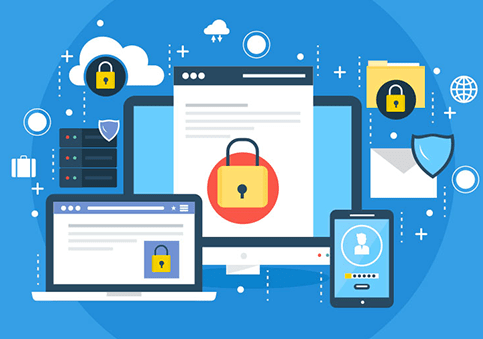Network endpoints are devices used by people remotely. They communicate back and forth with a network to which it is connected. They may come in the form of desktops, laptops, tablets, smartphones, servers, and Internet of Things devices.
For cybercriminals, these machines are unsecured points of entry. It is where they can run code and exploit vulnerabilities, as well as encrypt and infiltrate data assets.
Due to the proliferation of remote work and Bring Your Device policies, network endpoints network endpoints are becoming more at risk of cyberattacks. Cybercriminals target network endpoints for the following reasons:
- to collect high-value assets and information from an organization's network.
- to hold hostage data for ransom
- cause downtime or disruption to the company
- take control of the device and use it as part of a botnet to launch a denial-of-service attack

Importance of Network Endpoint Security
Network endpoint security is the process of protecting any element of an organization that has access to internal resources. This prompts cybersecurity professionals to look at every possible entry point that a hacker will take when launching an attack.
When hackers are planning to carry out an attack, the first thing they do is choose the mechanism they will exploit. It could be a smartphone, software, or email. After which, they look for ways how to put their plan into action while trying to circumvent defense systems.
With the use of network endpoint security tools, security specialists can investigate their local network and trace every incoming connection that tries to enter it. It blocks suspicious activities at the access points before they wreak havoc on the network.
How does Network Endpoint Security Work?
Firstly, the company must gather information about all access points. This will allow them to understand how to protect their network from attacks.
After careful evaluation and categorization of the endpoints on your network, you'll need to select a security solution for each technology tier. This should cover hardware and software protection, cloud protection, and network security. Some vendors may offer a comprehensive suite of services to provide all your needs.
Now, you're prepared to implement your chosen solution and go into monitoring mode. You'll need to thoroughly test and gauge each solution's performance to see whether there are any remaining network vulnerabilities. If they do, you must repeat the entire process.
Comparing: Network Endpoint Security vs Antivirus Software
The distinctions between antivirus software and a full network endpoint security solution are straightforward. An antivirus program checks the contents of a single computer or device for known malware or other harmful files. Most antivirus applications are updated regularly, and suspicious data is automatically quarantined.
Meanwhile, network endpoint solutions sift through the entire network, and not just one device. It scans all the nooks and crannies of the network's perimeter to identify, flag, and block any malicious data. Every new device connected to the network is automatically adopted in the endpoint protection.
Comparing: Network Endpoint Security vs Firewalls
Firewalls used to be hardware devices connected directly to your main network during the early years of the internet. However, nowadays, firewall solutions have become software-based. Regardless of where they are installed, their objective remains the same. It monitors all incoming web traffic and blocks certain IP addresses based on user-set policies.
Some organizations think that a strong firewall is enough to protect network endpoints. Unfortunately, this isn't always the case, especially for companies that have a lot of remote staff. Putting in place a complete network endpoint security strategy can account for all external connections that a firewall cannot always monitor.
Getting Network Endpoint Security Solution for your Company
When selecting your security solution, you should look for the following features:
Endpoint Encryption
- It works as a virtual private network client, responsible for encrypting all traffic that comes and goes through the system. You can reduce breaches if all outgoing data is encrypted.
Forensic Analysis
- This method focuses on data forensics, enabling you to get a clearer view of known issues and diagnose problems that are emerging from your network.
IoT Protection - If your organization uses Internet of Things devices, you may want to give them an extra layer of protection, like the one provided by EDR.
Email Gateways
- Phishing schemes and other email-based threats are the typical sources of cyber incidents. You can prevent suspicious messages from reaching your users by having email gateway security in your network endpoint security.
Quarantine Protection
- Network endpoint security tools that can isolate data or systems carrying a high level of risk in quarantine areas.
Final Thoughts
Investing in a top-quality network endpoint security solution is a critical step toward data security.
You may consider getting Endpoint Detection and Response from Xcitium. It offers an EDR tool that can detect data breach threats and initiate response processes. It is a solution that goes beyond simple monitoring and alerting. It does advanced analysis and forensics on all security incidents.
